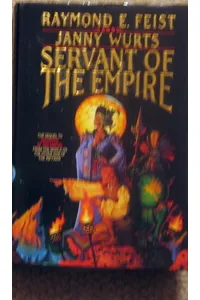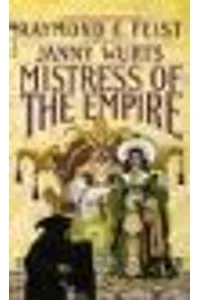Step into the captivating world of Riftwar: The World On The Other Side, where political intrigue, alien cultures, and a fierce heroine named Mara await! Known as The Empire Trilogy, this fantasy gem by Raymond E. Feist and Janny Wurts transports readers to Kelewan, a land of honor, betrayal, and epic struggles. Perfect for fans of high fantasy with a twist of political drama, this series is a must-read for those craving a richly woven tale.
Unlike its sibling, The Riftwar Saga, which explores the magical world of Midkemia, The Empire Trilogy dives deep into Kelewan’s Tsurani Empire, a society brimming with tradition and cunning. With its unique blend of epic fantasy and intricate world-building, this trilogy stands out as a landmark in the genre, earning praise for its compelling characters and gripping narrative.
How Riftwar: The World On The Other Side Began
The Empire Trilogy was born from a collaboration between Raymond E. Feist, creator of the Riftwar Cycle, and Janny Wurts, a talented fantasy author and artist. Feist’s Kelewan, introduced in his 1982 novel Magician, was inspired by M.A.R. Barker’s Tekumel, featuring a metal-scarce world with a rigid honor code and alien creatures like the cho-ja. Wurts brought depth to this setting, infusing it with her flair for political intrigue and character-driven storytelling. Published between 1987 and 1992, the trilogy emerged as a standout, offering a fresh perspective on the Riftwar universe.
The Heart of Riftwar: The World On The Other Side
The Empire Trilogy comprises three books: Daughter of the Empire (1987), Servant of the Empire (1990), and Mistress of the Empire (1992). The story follows Mara of the Acoma, a young woman thrust into leadership after her father and brother are killed. In Daughter of the Empire, Mara navigates Kelewan’s treacherous political landscape, forging alliances with rebels and the insectoid cho-ja to save her family. Servant of the Empire sees her rise in power, tackling romance and new threats, while Mistress of the Empire delivers a thrilling climax as Mara battles spies, assassins, and the fearsome Black Robes to secure her legacy.
The trilogy shines with themes of resilience, honor, and cultural clash. Kelewan’s Tsurani society, reminiscent of feudal Asia yet wholly original, emphasizes rigid protocols and clan rivalries. Mara’s journey from novice to cunning ruler blends personal growth with high-stakes drama, while the alien world—lacking metals and featuring unique creatures—adds a sci-fi flavor to the fantasy. Wurts’ influence elevates the prose, making the series lush yet accessible, with twists that keep readers hooked.
Why Riftwar: The World On The Other Side Resonates
The Empire Trilogy has left a lasting mark on fantasy, praised for its strong female protagonist and intricate world-building. Fans on platforms like Goodreads and Reddit celebrate Mara’s intelligence and resourcefulness, often comparing the series to James Clavell’s Shogun for its political depth. Its focus on Kelewan offers a refreshing contrast to Midkemia’s more traditional fantasy, appealing to readers seeking diverse settings. The trilogy’s influence extends to potential TV adaptations, with Six Studios optioning it in 2022, signaling its enduring appeal.
- Publication Years: 1987–1992
- Number of Books: 3
- Authors: Raymond E. Feist and Janny Wurts
- Setting: Kelewan, part of the Riftwar Cycle
Grab Daughter of the Empire and dive into Riftwar: The World On The Other Side’s thrilling blend of fantasy and intrigue! Whether you’re a Riftwar veteran or a newcomer, Mara’s epic journey will keep you turning pages late into the night.


